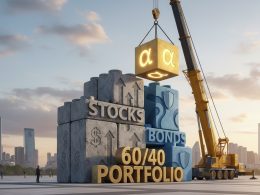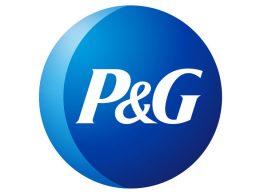by Kristina Hooper, Invesco Canada
Last week was one of those weeks when anyone following the news flow closely would have a serious case of whiplash. Friday alone put me in a neck brace as we saw a serious escalation in the trade wars between the U.S. and China. Other notable events last week included:
- The yield curve inverted again.
- IHS Markit’s U.S. Manufacturing Purchasing Managers’ Index (PMI) fell below 50 for the first time in a decade. This signifies that the U.S. manufacturing sector is in contraction, and it is a clear sign that the trade wars are having an impact.
- Four Federal Open Market Committee (FOMC) members surprised markets by expressing reluctance — of varying degrees — to additional rate hikes.
Powell tries to reassure markets, but does not commit to rate cuts
Then came Friday, Aug. 23. Federal Reserve (Fed) Chair Jay Powell delivered a much-awaited speech at Jackson Hole, the Kansas City Fed’s annual symposium. In his speech,1 Powell recognized that there are “significant” risks to the global economy, and that those risks include tariff wars and Brexit. But he also underscored the dichotomy between the U.S. economy and other major economies, noting that the U.S. economy is in a “favorable place” while there is a global slowdown under way.
[backc url='https://sendy.advisoranalyst.com/w/2CbO3sXqwUF8u2dyl69Y5Q/763n6KPErrIdSKvj9ggLLKKQ/3r1wwwm7YluTyJizKIJL763Q']Powell explained, “Trade policy uncertainty seems to be playing a role in the global slowdown and in weak manufacturing and capital spending in the United States.” But there is no playbook for how a central bank should handle an economic headwind such as trade. Powell noted, “We have much experience in addressing typical macroeconomic developments” through the Fed’s policy framework but “fitting trade policy uncertainty into this framework is a new challenge.” Powell was clear in pointing out that there are limits to the Fed’s ability to respond to the trade issues.
However, Powell tried to strike a reassuring tone, saying that the Fed would “act as appropriate” to keep the U.S. economy healthy in the face of tariff wars and a deteriorating global economic environment. Powell did not commit to a series of rate cuts, but that was never something I would have expected, especially given the comments made by other FOMC members leading up to Jackson Hole. Vice Chair Richard Clarida crystallized that message in a follow-up interview with CNBC where he explained, “We take our policy decisions one meeting at a time.”2
President Donald Trump was displeased with the outcome, tweeting, “As usual, the Fed did NOTHING! It is incredible that they can ‘speak’ without knowing or asking what I am doing, which will be announced shortly.”3 This expectation baffled me, as it is hard for the Fed to justify many rate cuts given the solid fundamentals of the U.S. economy at this juncture, with growth solid, inflation tame and unemployment very low. In my view, any rate cuts would have to be viewed as “insurance” that is intended to help protect the U.S. economic expansion, which is how the July rate cut was characterized. Ironically, the Fed would have to view its role as being “the world’s banker” to justify much monetary policy accommodation — which would fly in the face of the Trump administration’s focus on “America First.”
The U.S.-China trade war escalates
But the big news from Friday is that the trade wars escalated. China announced retaliatory tariffs, followed by a series of tweets by Trump. In my view, there are several important takeaways from Friday’s developments:
- The trade wars will not easily be resolved. Sure, there will be moments of positive news flow on trade developments, but that does not mean a resolution is around the corner. As I have said for some time, China is in a far better bargaining position than the U.S; I don’t see any compelling reason why China would capitulate.
- The Trump tweets suggest that the president may no longer delay implementation of part of the new tariffs until December — although this has not been confirmed. This could create a headwind for U.S. consumers, one that the president was seeking to avoid by postponing implementation of the tariffs.
- Trump has increased economic policy uncertainty with his tweet ordering companies to “start looking for an alternative to China.”3 He followed up with an assertion that he has the power to do that through the International Emergency Economic Powers Act of 1977 (IEEPA). According to this act, the president has broad discretion to determine that circumstances abroad have created “any unusual and extraordinary threat” to “the national security, foreign policy or economy of the United States.” This allows the president to declare a “national emergency” which then allows for extremely broad powers, enabling the president to regulate “any transactions in foreign exchange” by any person subject to U.S. jurisdiction. This law was also used as the rationale for Trump’s Mexican tariff threat back in late May, which he used in an attempt to achieve immigration policy goals. While the law requests that the president consult with Congress before exercising any of the authorities, it is not required. There are many question marks around whether the IEEPA can actually be used for such a purpose, but it would have a chilling effect on confidence and capital spending if the administration were to attempt to implement the president’s decree by tweet.
Conclusion
In summary, economic policy uncertainty can suppress CEO confidence and business investment. And we got a giant dose of uncertainty and unpredictability with Friday’s developments. It is no surprise that, on Friday, stocks sold off, copper fell to its lowest level since June 2017, and gold hit a six-year high.4 We also have to worry that the trade war escalation may increase the chances of a currency war.
The probability of a recession continues to rise, but I must repeat that recession is not a foregone conclusion. In my view, this is a slow-motion accident that can be stopped with a resolution of the tariff wars, which could mitigate the damage being done to the U.S. economy (and the global economy). But we have to be realistic that there is little the Fed can do to help — not because it’s not willing to (although it is difficult to justify) — but because monetary easing can’t fix tariff wars, as Powell tried to explain at Jackson Hole.
We will need to follow a variety of metrics to assess the economy, including the consumer expectations gap. In particular, we want to follow those metrics that indicate the damage being created by tariff wars: the Economic Policy Uncertainty Index, the CEO Confidence Survey, small business expenditure plans from NFIB (National Federation of Independent Business), and capex spending (as mentioned in last week’s blog).
While the Fed does not have the cure for what ails the economy, its accommodation is likely to be supportive of stocks and other risk assets, in my view. So I believe that investors should stay invested — maintaining exposure to risk assets including stocks. Expect volatility; as news flow around trade will move markets up and down — but remember that trying to market time is extremely difficult as it’s impossible to accurately predict these ups and downs in advance. I believe in staying well-diversified within both equity and fixed income sleeves, and don’t forget the importance of alternatives (such as real estate and gold, and market-neutral portfolios) in further boosting a portfolio’s diversification beyond stocks and bonds.
This post was first published at the official blog of Invesco Canada.













